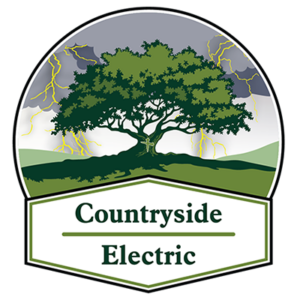8 Home Electrical Safety Tips

Your home is a sanctuary, but it can quickly turn into a hazardous zone if electrical safety is overlooked. From faulty wiring to outdated appliances, electrical issues pose a serious threat.
To help safeguard your family and property, we’ve put together this blog article that offers eight essential electrical safety tips. Take a look!
Regular Inspections: The First Line of Defense
Frequent electrical inspections are the cornerstone of home safety. Conduct visual inspections of your wiring, outlets, and appliances. Look for signs of wear, frayed cords, or exposed wires. If you notice anything unusual, consult with a licensed electrician immediately. Regular professional inspections every few years can uncover potential issues before they become hazards.
Upgrade Outdated Wiring: Modernize for Safety
If your home is equipped with outdated wiring, such as knob-and-tube or aluminum wiring, it’s time for an upgrade. Older wiring systems may not meet the demands of modern electrical needs, increasing the risk of electrical fires. Consult with a professional electrician to assess the state of your wiring and make necessary upgrades to ensure safety and compliance with current standards.
Watch for Overloaded Circuits: Distribute the Load
Overloading circuits is a common cause of electrical fires. Avoid plugging too many devices into a single outlet or power strip. Be mindful of the electrical load each circuit can handle, and distribute your devices accordingly. Consider hiring an electrician to install additional outlets if needed, reducing the reliance on power strips and extension cords.
Use Appliances Wisely: Mindful Power Consumption
Appliances play a significant role in our daily lives, but using them recklessly can lead to electrical hazards. Follow manufacturer guidelines for proper usage, avoid overloading appliances, and unplug them when not in use. Regularly check cords for damage, and replace any that show signs of wear to prevent electrical shocks.
Ground Fault Circuit Interrupters (GFCIs): Install for Added Protection
GFCIs are essential for areas prone to moisture, such as bathrooms, kitchens, and outdoor outlets. These devices automatically shut off power when they detect a ground fault, preventing electric shocks. Install GFCIs in these areas and test them regularly to ensure they’re functioning correctly.
Childproof Outlets: Small Hands, Big Risks
For households with young children, childproof outlets are a must. These outlets have built-in safety features that prevent children from inserting objects into them. Investing in childproof outlets or using outlet covers is a simple yet effective way to minimize the risk of electrical accidents.
Light Bulb Safety: Choose Wisely
Selecting the right light bulbs is an often-overlooked aspect of home electrical safety. Ensure that bulbs match the recommended wattage for fixtures, as using bulbs with higher wattage can lead to overheating and pose a fire risk. Consider energy-efficient LED bulbs, which emit less heat and consume less energy.
Educate Family Members: Knowledge is Power
Educate your family members, especially children, about electrical safety. Teach them not to play with electrical outlets, cords, or appliances. Create a clear emergency plan that includes steps to take in case of a power outage or if someone receives an electrical shock.
A shock-free home is within reach by following comprehensive home electrical safety tips. Regular inspections, responsible appliance use, and investing in modern safety features contribute to creating a secure haven for you and your loved ones. Don’t compromise on electrical safety—take proactive measures to enjoy the comfort and peace of mind that come with a well-maintained, hazard-free home.
If you could benefit from working with a professional electrical contractor, click here!

